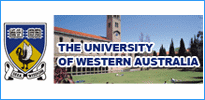European Union: European Union Education Profile 2012
2012/03/09
European Union Education Profile 2012
Studying in the European Union
Funding programmes
Learning, training and exchange opportunities throughout the EU
Umbrella programme for all EU education and training initiatives (Erasmus, Leonardo da Vinci, Comenius, Grundtvig, Jean Monnet, Tempus, Erasmus Mundus)
Erasmus helps students study in other European countries via exchange programmes, and encourages cooperation between higher-education institutions;
- Through the Comenius programme, it invests millions of euros each year in projects that promote school exchanges, school development, the education of school staff, school assistantships and more.
- The Commission works closely with national policy-makers to help them develop their school education policies and systems. It gathers and shares information and analysis and encourages the exchange of good policy practices.
Priority areas
Key competences
Schools should help pupils take responsibility for their own learning and personal development throughout their lives and provide them with the essential ‘competences ’ – i.e. knowledge, skills and attitudes – for successful membership of society and the workforce.
- Pupils and students This table includes the total number of persons who are enrolled in the regular education system in each country. It covers all levels of education from primary education to postgraduate studies. It corresponds to the target population for education policy.
- Foreign languages learnt per pupil - The average number of foreign languages learned per pupil in secondary education (ISCED 2 and 3) is obtained by dividing the total number of pupils learning foreign languages by the number of pupils at that level. A foreign language is recognised as such in the curriculum or other official document relating to education in the country. Irish, Luxembourgish and regional languages are excluded, although provision may be made for them in certain Member States. Allowing for exceptions, when one of the national languages is taught in schools where it is not the teaching language, it is not considered as a foreign language.
Unemployment rates of the population aged 25-64 by level of education - The indicators focus on the 25 to 64 years old. They show the "probability" of being without a job for those who would like to have one, broken-down by level of education. The indicators provide a measure of difficulties that people with different levels of education have to face in the labour market and offer a first idea of the impact of education in reducing the chances of being unemployed.
 Private expenditure on education as % of GDP - Expenditure on educational institutions from private sources comprises school fees; materials such as textbooks and teaching equipment; transport to school (if organised by the school); meals (if provided by the school); boarding fees; and expenditure by employers on initial vocational training.
Private expenditure on education as % of GDP - Expenditure on educational institutions from private sources comprises school fees; materials such as textbooks and teaching equipment; transport to school (if organised by the school); meals (if provided by the school); boarding fees; and expenditure by employers on initial vocational training.
- European Union News
-
- FRANCE: Aluminium-Lithium Alloys Fight Back
- AFGHANISTAN: UNWTO: International tourism – strongest half-year results since 2010
- ALBANIA: US LNG exports make European market more competitive
- AZERBAIJAN: Azerbaijan, EU set to continue talks on common aviation area deal
- EUROPEAN UNION: UK seeks to 'align' with EU on data protection rules
- EUROPEAN UNION: ECB Rate-setters Raise Concern Over Euro Strength
- Trending Articles
-
- CHINA: China welcomes Guinea to take part in Belt and Road Initiative
- UNITED STATES: Spotify, Hulu target students with discounted bundle
- CAMEROON: Poor End of Year Results for Cameroon Students
- AUSTRALIA: Queensland Bauxite Gains State Approval of Mineral Development Work Program
- CHINA: Chinese-supported infrastructure projects change Zambia's landscape
- UGANDA: Ugandan Govt Starts Verifying International Academy Teachers
















